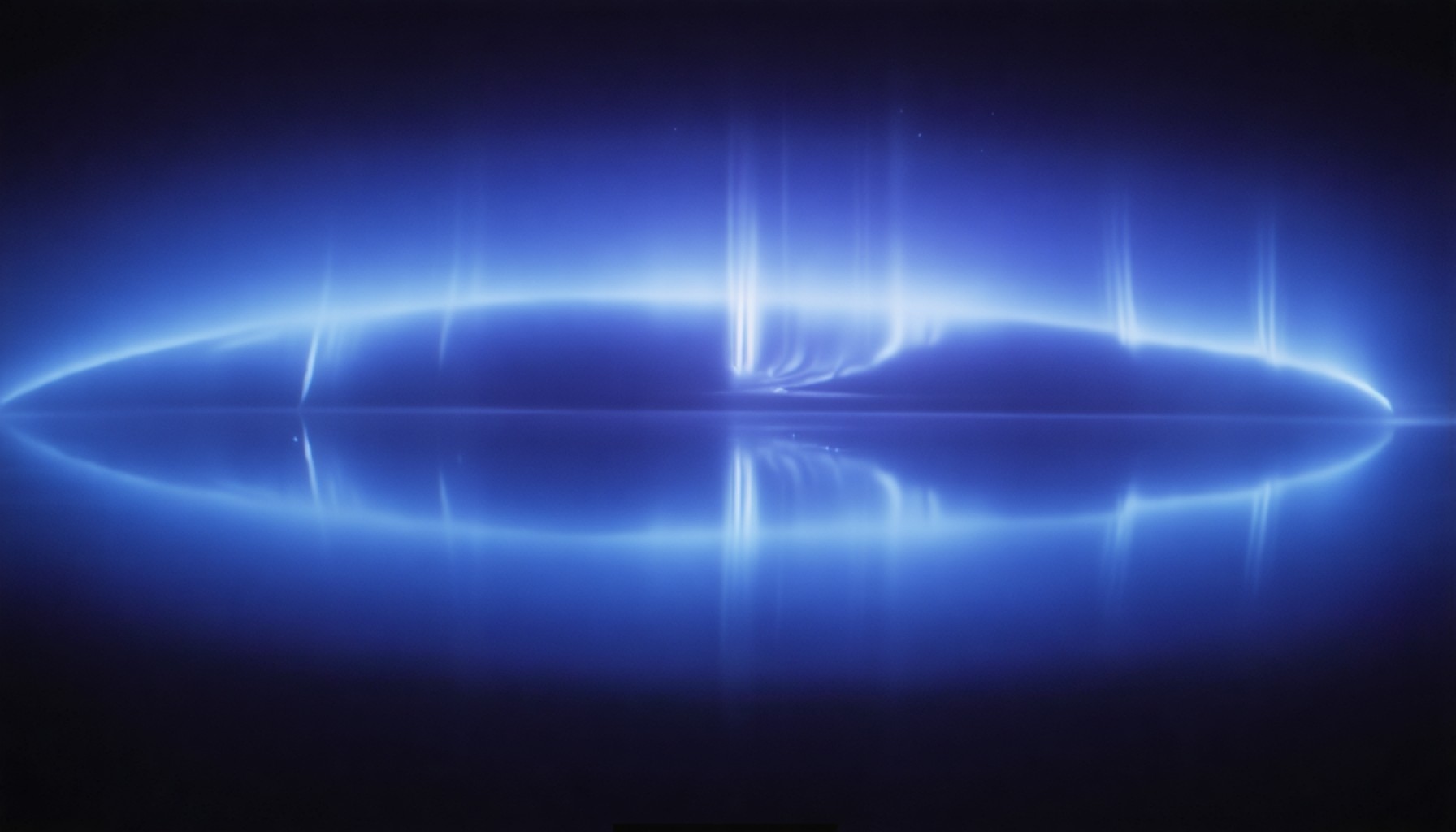- The James Webb Space Telescope (JWST) has unveiled Neptune’s enigmatic auroras, providing new insights into this distant planet’s atmospheric phenomena.
- Unlike Earth, Jupiter, or Saturn, Neptune’s auroras appear in unexpected locations due to its skewed magnetic field influencing the solar wind’s charged particles.
- Recent observations indicate Neptune’s atmospheric temperatures have dropped significantly since Voyager 2’s 1989 flyby, contributing to the auroras’ elusive nature.
- The discovery of the trihydrogen cation (H₃⁺) links Neptune’s auroras to similar phenomena observed in other gas giants.
- These findings highlight JWST’s advanced capabilities and suggest promising opportunities for future missions to explore the outer planets further.
Beneath the cold shroud of the solar system’s azure outlier, an ethereal phenomenon has surfaced. The James Webb Space Telescope (JWST), with its state-of-the-art capabilities, has unveiled the enigmatic auroras of Neptune, painting a vibrant portrait of this distant realm’s atmospheric mysteries.
For decades, whispers of Neptune’s auroras teased astronomers worldwide. The intrepid Voyager 2 offered tantalizing hints in its brief 1989 encounter, yet the elusive celestial dance remained unseen by human eyes. At last, JWST has cut through the silence, delivering a luminous testimony with its near-infrared prowess.
Neptune’s auroras break the planetary mold. Unlike the Earth, Jupiter, or Saturn, where auroras gleefully swirl around polar crowns, Neptune’s auroras shine defiantly in unexpected locales. This peculiar behavior is a direct result of Neptune’s skewed magnetic field, which mischievously redirects the solar wind’s charged particles in a whimsical ballet across the planet.
The shimmering auroras reveal more than captivating visuals; they tell a story of temperature and transformation. Recent data from JWST calls attention to an atmospheric chill that has gripped Neptune since Voyager 2 glanced its way. Astoundingly, the current recorded temperatures plummet to just half what was recorded during that historic flyby. Cooler skies mean fainter lights, perhaps explaining why Neptune’s auroras dodged the spotlight for so long.
In this newfound glow, scientists have also detected the enigmatic trihydrogen cation (H₃⁺), a cosmic clue that ties Neptune’s light show to those of its gaseous siblings. This ion, long associated with auroral phenomena, binds Neptune’s eccentricity to a broader celestial narrative woven across the gas giants.
As the scientific community revels in this breakthrough, the spotlight turns to future possibilities. With JWST setting a new standard for visual prowess, the next generation of missions will undoubtedly be armed with infrared tools, primed to uncover the outer planets’ many secrets. Neptune’s auroras, once a whisper in the cosmic winds, now guide the way, casting their glow on the boundless promise of exploration and discovery.
This revelation not only illuminates Neptune’s mysteries but also ignites curiosity, urging humanity to venture further into the cosmic unknown.
Unveiling Neptune’s Mysteries: A Deeper Dive into the Planet’s Enigmatic Auroras
An In-depth Exploration: Understanding Neptune’s Auroras
The James Webb Space Telescope (JWST) has provided unprecedented insights into the mysterious auroras of Neptune, transforming our understanding of this distant world. Unlike the more commonly observed auroras on Earth, Jupiter, and Saturn, Neptune’s auroras exhibit unique characteristics largely due to the planet’s unusual magnetic field.
Understanding Neptune’s Auroras
1. Peculiar Magnetic Field: Neptune’s magnetic field is tilted at an angle of 47 degrees relative to its rotation axis. This is more tilted than Earth’s, causing the auroras to appear in unexpected areas rather than just the poles. This deviation is a significant factor in the erratic display of auroras on Neptune.
2. Atmospheric Temperatures: Data from the JWST reveals that Neptune has undergone significant cooling since Voyager 2 passed by. The temperatures recorded are half of what Voyager noted, which may contribute to the dimness and rarity of the auroras—less energy means fainter displays.
3. Presence of H₃⁺ Ions: The detection of the trihydrogen cation (H₃⁺) is significant. This ion is known for enhancing auroral displays on gas giants. Its presence on Neptune links the planet’s auroras to those seen on other gas giants, providing a unified auroral mechanism across the solar system.
Future Implications
The capabilities demonstrated by the JWST open up numerous possibilities for future research and exploration:
– Infrared Exploration: JWST’s use of near-infrared technology has been crucial in revealing Neptune’s auroras. Future missions will likely incorporate extensive infrared capabilities to further explore the outer planets.
– Comparative Planetology: Studying Neptune’s auroras can shed light on similar processes on other planets, enabling scientists to draw parallels and understand the broader dynamics of our solar system.
– Interplanetary Missions: This discovery could spearhead more targeted missions to Neptune and beyond, potentially uncovering more about the atmospheric and magnetic dynamics of other outer planets.
Practical Applications
1. How to Track Auroral Evidence: Future astronomers might use advanced telescopes with infrared capabilities, similar to the JWST, to track and analyze auroras on other planets.
2. Leverage of H₃⁺ in Research: Given its role across various planets, researchers can focus on H₃⁺ ions to predict or analyze auroral behavior, aiding in planetary atmospheric studies.
Market Trends & Predictions
– Advancements in Telescope Technology: With missions like JWST setting the precedent, advancements in telescope design focusing on infrared capabilities and magnetic field detection are expected.
– Increased Interest in Planetary Science: As new data emerges, funding for planetary science is likely to increase, particularly for missions targeting the outer planets.
Actionable Tips
– Stay Updated with Space Missions: Follow organizations like NASA and the European Space Agency to stay informed about upcoming missions to Neptune.
– Engage with Astronomy Platforms: Platforms like NASA and ESA offer resources and updates on planetary discoveries, including live streams and research publications.
In conclusion, JWST’s insight into Neptune’s auroras not only redefines our understanding of solar system phenomena but also reignites the passion for space exploration. With each new discovery, we find ourselves on the cusp of broadened horizons, driven by curiosity and the quest for knowledge.
